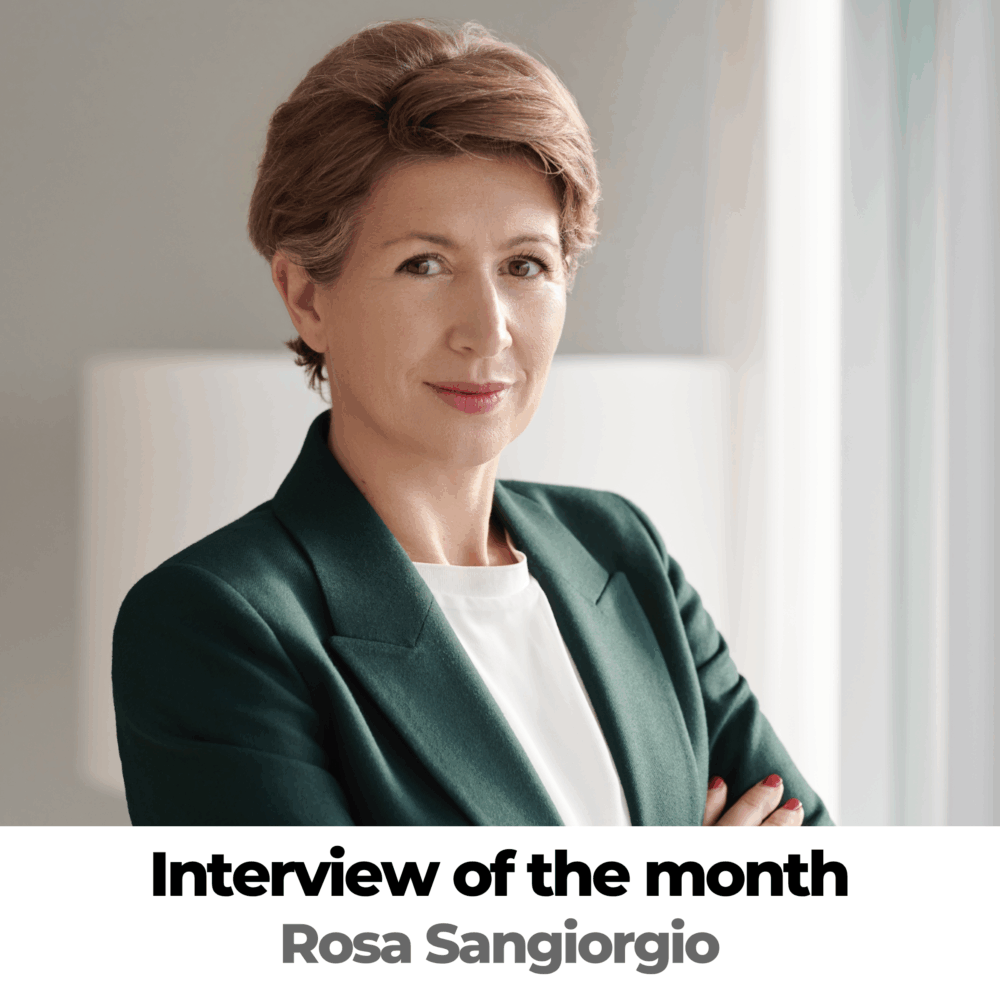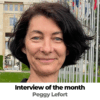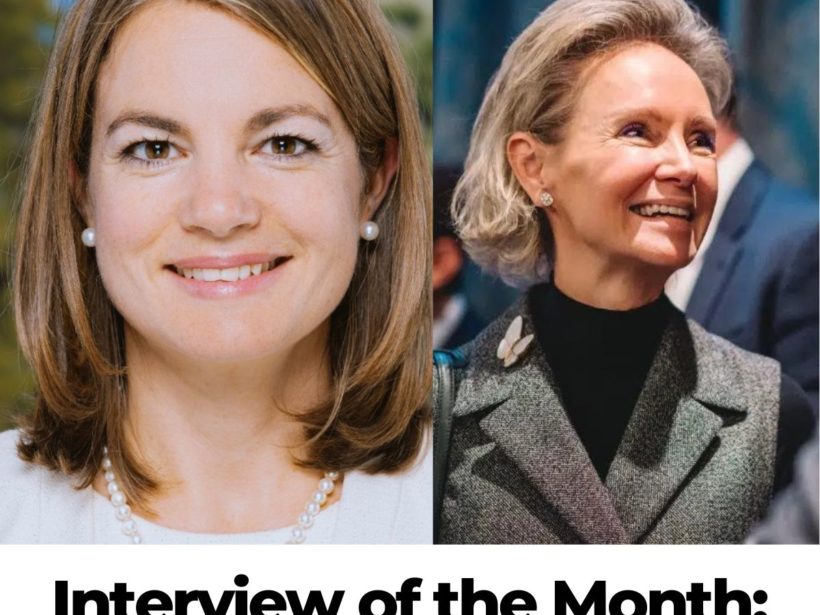
Interview of the Month: Rosa Sangiorgio
This month, we spoke with Rosa Sangiorgio, Chair of the Swiss Platform on Impact Investing (SPII), about how Switzerland is stepping onto the global impact stage. In this interview, she breaks down the role of the Global Steering Group for Impact Investing (GSG Impact) and explains why being part of this 40+ country network is a game-changer for Switzerland’s financial sector. Rosa also dives into SPII’s priorities, mobilizing capital, connecting ecosystems, and amplifying Switzerland’s global voice, while debunking myths through evidence and collaboration.
Could you explain the GSG Impact for those who are less familiar with the organization? What are the advantages of Switzerland being part of this global network?
GSG Impact was launched in 2015, succeeding the Social Impact Investment Taskforce established under the UK’s presidency of the G8. Its mission is to accelerate the adoption of impact investing globally, bringing together leaders from finance, business, government, and civil society through a network of National Advisory Boards, currently implemented in over 40 countries.
One of the challenges of impact investing is that it has grown in a bottom-up manner, led by niche players, without the scale or consistency needed to influence mainstream capital flows. GSG Impact addresses this by creating scale, connecting ecosystems, and ensuring that best practices and common standards can be shared and adopted internationally.
If I had to summarize, GSG Impact works to advance policies, mobilize capital, and strengthen the infrastructure that enables investments to deliver measurable social and environmental impact alongside financial returns.
For Switzerland, being part of this global network is a unique opportunity. Given our long history as a global wealth management hub, our expertise in sustainable finance, and our culture of innovation, we can both contribute to and benefit from the GSG Impact network. Participation allows us to learn from our peers, access proven models from other markets, and align on common definitions and expectations, therefore strengthening our domestic ecosystem, while amplifying Switzerland’s voice and influence on the global stage.
What are the priority areas of work for the SPII? As a platform, how will it tangibly function?
The Swiss Platform for Impact Investing (SPII) focuses on:
- Mobilizing more capital toward investments that generate positive impact alongside financial returns.
- Fostering a thriving and effective Swiss impact ecosystem, including working on knowledge sharing, clarity and collaboration.
- Strengthening Switzerland’s role and visibility as a leading global hub for impact investing.
We operate by connecting and coordinating stakeholders, facilitating knowledge exchange, and catalyzing joint initiatives. We launched the SPII last December, selected an Executive Board, and have been working since in parallel both on detailing our own Theory of Change and on supporting the ecosystem with a few key projects.
By working through our Theory of Change together, we have identified our target impacts and connected single activities to meaningful strategic outcomes.
In parallel, we have initiated or supported a few key initiatives of the ecosystem in the past months: from a mapping of the Impact Ecosystem, led by Sustainable Finance Geneva and iGravity, to a collaboration with the GIIN on a series of Webinars on key impact investing topics, and we are working on a publication resulting from a number of roundtables that discussed impact measurement challenges. Further topics we hope to explore soon include how to collaborate better with stakeholder like Pension Funds, Academia and the Entrepreneurs to leverage their competence and experience.
A key thing for the community to know is that SPII is a platform above all else. We operate by connecting and coordinating stakeholders, facilitating knowledge exchange, and catalyzing joint initiatives. That means we engage actors from across Switzerland in our work. While the Executive Board will champion some key projects, we will also have a process for the community to lead and submit projects to the SPII so that we can ensure alignment of our individual efforts. Through this approach, we aim to ensure the Swiss impact investing community is bigger than the sum of its parts.
How would you describe the current level of awareness/knowledge around impact investing in the Swiss financial sector?
Awareness is growing, but depth of understanding varies widely.
Many institutions are well-versed in sustainable finance but still equate it with ESG integration or risk management, rather than intentional, measurable impact.
In some segments, there’s genuine curiosity and readiness to engage. In others, there’s a need for more clarity on the business case, the diversity of impact strategies, and the role investors can play in addressing systemic challenges.
What are the largest barriers preventing the flow of capital towards impact investing?
Clearly investing with the intention of making a positive, measurable impact can happen across asset classes and in very different ways from capital allocation to active ownership. Depending on which type of asset class and tool we are using, barriers may look quite different.
In general, one major barrier is the perception that impact investing inherently involves sacrificing financial returns. This is a belief that’s not supported by evidence but remains persistent.
Another is the lack of standardized definitions and metrics, which creates uncertainty for investors. Unfortunately, it’s less the availability of data or metrics the culprit here, but more the consistency of usage.
Then there’s also inertia in large institutions, where processes and mandates are designed for traditional investments. This manifests itself in a range of ways. For example, under the status quo, risk often refers to backward-looking estimates, instead of forward-looking analysis including the risk of inaction. Or with Emerging Markets, they are often blanket labelled “risky” despite each country having vastly different contexts and the fact that these markets play important roles in changing global demographics and innovation.
Finally, many investors lack visibility on investable opportunities, especially in private markets and emerging themes.
You mentioned that there are misconceptions about impact investing in both developed and emerging economies, how is the SPII debunking these beliefs?
We are addressing misconceptions through evidence, dialogue, and visibility.
As an example, the market mapping exercise will provide a useful tool to better understand who the players in the space are, support their growth and collaboration, and debunk the idea that it is a niche market with very few investment opportunities.
We would also like to work more closely with Academia to ensure their incredible knowledge base becomes palatable to more stakeholders and encourages actors to make decisions on evidence, not potentially incorrect perceptions.
Finally through public events and community calls, we will continue to highlighting best practices and real-world examples of investments that have delivered both strong financial results and measurable positive outcomes.
How can people get involved in the SPII if they are interested?
First of all, you can sign up for our newsletter to stay informed about project updates, new resources, and upcoming community calls. You can also join our first SPII Community Webinar on 15th October where we will launch the Swiss Impact Investing Map. At this event we will also launch a public consultation for the map where stakeholders can verify the data and/or highlight missing players.
Second, if you have a project idea that aligns with the platform’s priorities, or have capacity to support existing projects, let us know by emailing and we may end up working together on it.
Overall it’s a collaborative effort. Our strength will come from the diversity and commitment of those who choose to be part of it.
Learn more at: https://www.swissimpactinvesting.ch/


